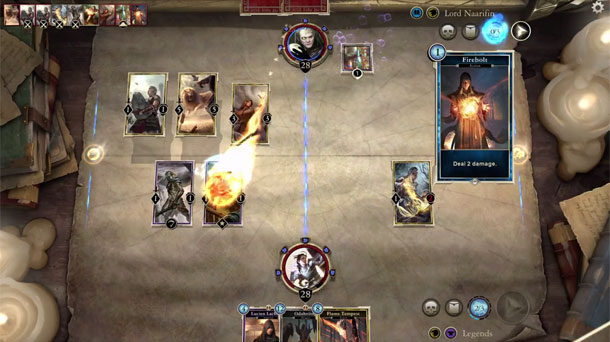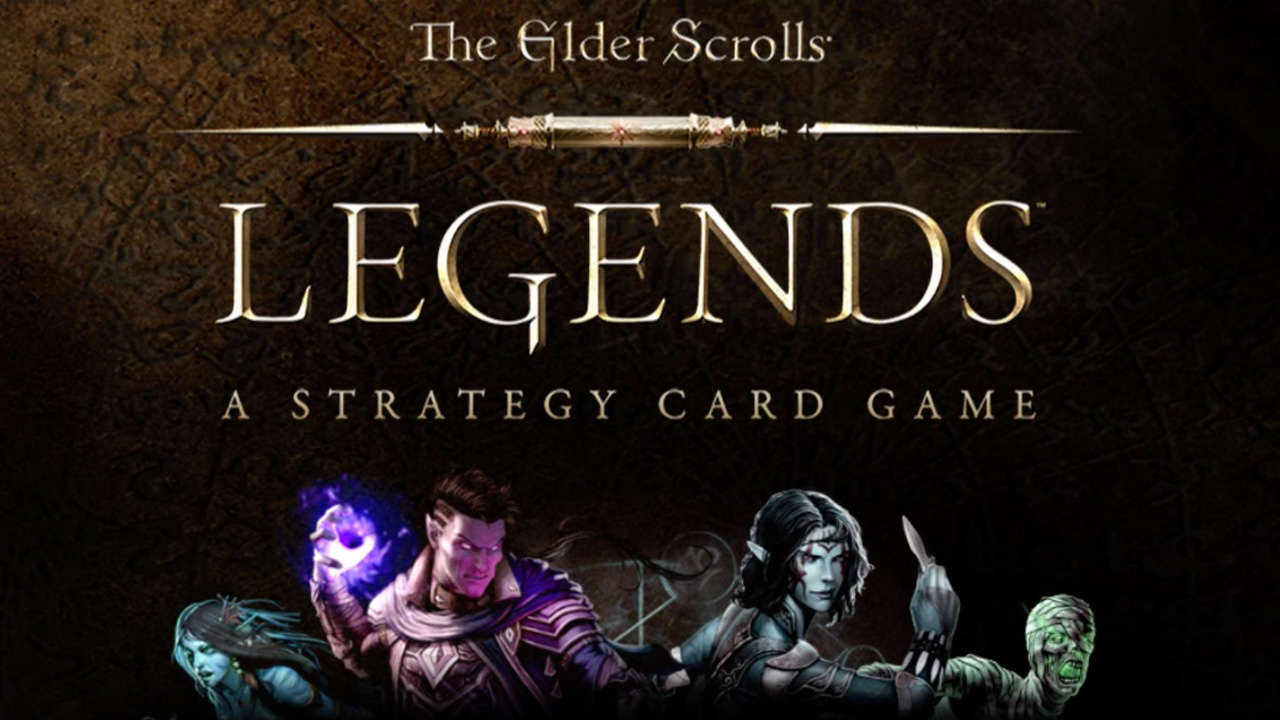Hearthstone is popular, so it makes sense that other companies would want to get on the wagon that is their success. There was Duelyst, which has hit a decent amount of popularity, and now there is Bethesda’s Elder Scrolls Legends (and soon there will be Gwent). The biggest question of course, is will these games do enough in order to differentiate themselves from Hearthstone.
When you launch Elder Scrolls Legends, it takes you through a very long tutorial that will probably be helpful to someone who has never played an online CCG (collectable card game) before. It establishes the very basics of how to play the game. Each player controls minions, cast spells, and tries to bring their opponent’s health to zero in order to win.
For a Hearthstone player, it takes several matches before you wind up learning the new mechanics. It’s worth getting though those boring opening chapters in order to get there though. Because the mechanics that Legends introduces could go a long way in making the game something unique in the CCG space.
It’s best to start with the most obvious change. The board is cut in half, so there are two lanes. Minions in one lane can only attack enemies in the same lane. Each lane can also have special effects on them. While the left lane is standard, the right lane might have something called “cover” which makes minions unable to be attacked the first turn they enter the lane. It adds an additional layer of strategy into where you place your minions.
Along those lines, the cards have similar effects as they do in Hearthstone. There are battlecries, deathrattles, taunt, and so on. But they have added a few additional ones that will help pull the game further into its own space. The first of which is called “Breakthrough”, which triggers when one of your minions attacks the enemy. Normally, if you had a higher attack power, you’d simply kill the enemy minion. With breakthrough, you also deal any of the remaining damage to your opponent’s health.
The second effect that’s been added is called “Prophecy” and it deals with another feature of Legends. Your hero has thirty health when the game begins – similar to Hearthstone – but every time you lose five health, you give a free card from your deck. If that card has “Prophecy” written on it, you can then play the card for free. It adds an element of RNG to the game, but also gives matches the potential for upsets and comebacks. It doesn’t trigger very often, and sometimes the card you pull for free won’t actually help you, but it’s a good idea nonetheless.

When it comes to deck building, you can easily see the kind of deck archetypes that Legends is going for. There are definitely going to be aggressive decks and some control decks. What I’m most excited for are the kind of deck archetypes we haven’t seen yet. One element of deck building that’s different in Legends, compared to Hearthstone, is that the number of cards in your deck can vary between fifty to seventy cards. This opens up several possibilities for the kinds of decks the game will see. How different will a deck be if it has just fifty cards, compared to sixty? Or fifty-five? If nothing else, this is one of the most exciting things in Legends.
The other, is card upgrades. Every time you level up your class, you might be presented with a chance to upgrade one of your class specific cards. Some of them will only be upgraded in one way, but there are others that will you give you an option. That’s where the excitement comes in. Your choice is permanent so there’s the possibility that you’ll be going up against an opponent who chose to upgrade that same card in a different direction. Therefore, the strategies that these cards are useful for, doubles instantly.
The rest of the game is very similar to Hearthstone. There’s a versus ladder, an arena, a place to buy and spend in game currency on new cards. There’s also a single player campaign that appears to be several levels long. It’s essentially how you’ll earn all your basic cards, but it doesn’t seem to be interesting, or very fun. But this is all beta stuff, so there’s definitely the chance for things to change.
Overall Legends looks like it’s doing enough to make it fun and different in a way that allows it exist in the same space as Hearthstone. Now whether there’s an audience that wants another kind of CCG, it’s hard to say. If Bethesda does its best to support the game on an esports level, there might be something there. If nothing else, Hearthstone needs a competitor, and I hope that Legends is going to be it.
